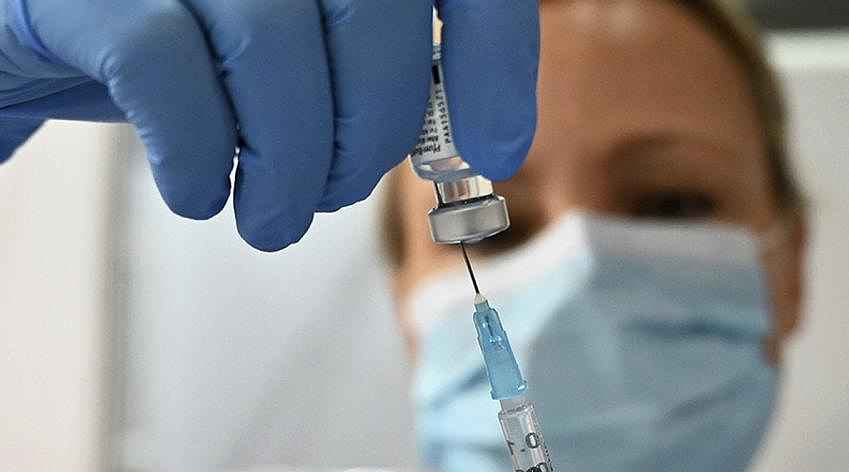

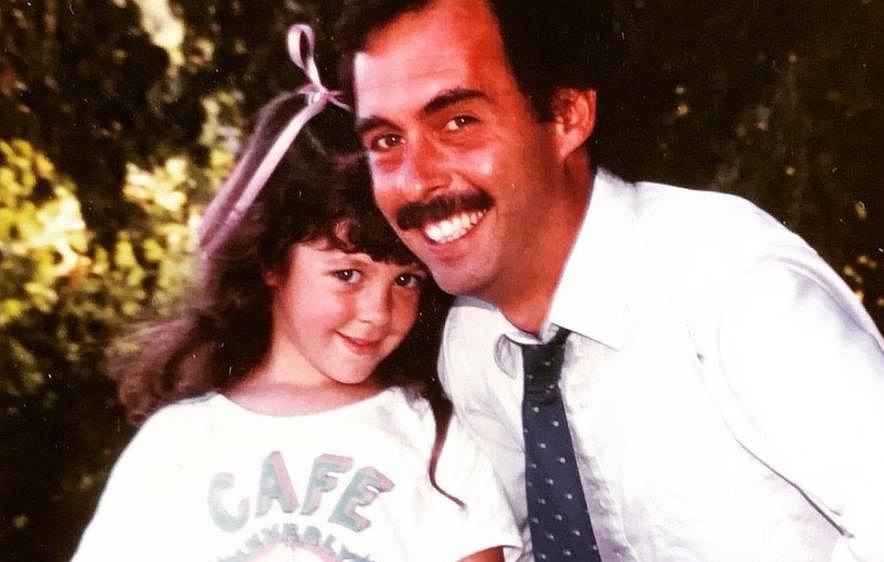
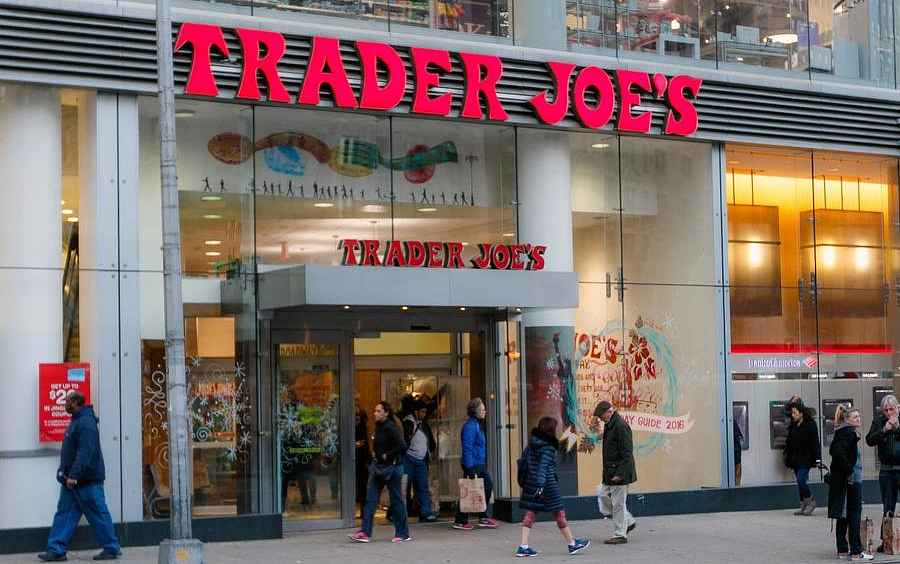

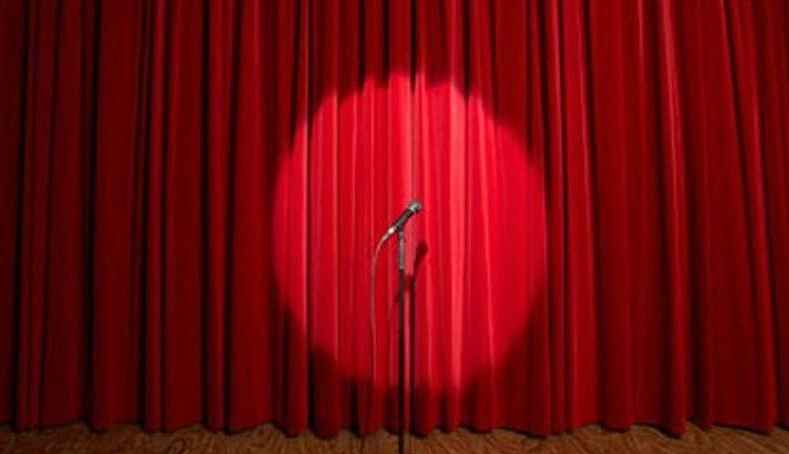
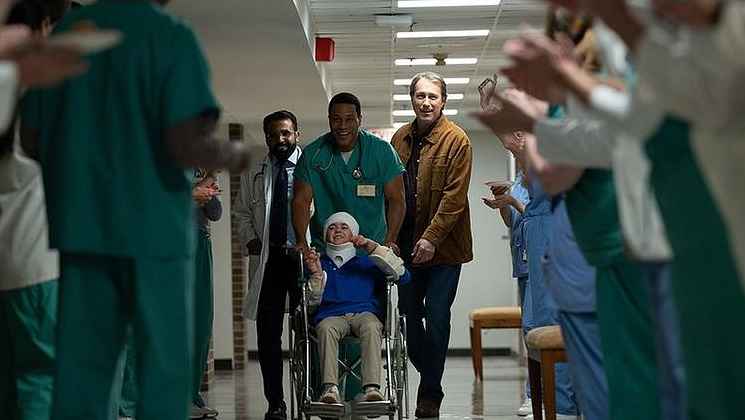
See listing of Recent and Most Popular articles on the Home Page
Health & Wellness
Category: News & Current Events / Topics: Communication • COVID-19 • Demographics • News • Social Issues • Social Movements • Statistics • Trends • Trust
Vaccination Resistance
by Stu Johnson
Posted: July 17, 2021
What Gallup polls in the last year tell us about American willingness or reluctance to be vaccinated, and the impact on our ability to reach herd immunity to end the threat of COVID-19…
When columnist Byron York raised the question this past week "Would Democrats still love vaccine if Trump had won?" it seemed a plausible idea at first.
If you relied only on media reports, you could think the question has considerable merit. Some of the statements York cites support the idea that attitudes toward the COVID vaccine had a partisan bias that changed radically with the November election.
As it turns out, however, the view of the American population did not flip nearly as much, if at all, when the 2020 Presidential Election put Joe Biden and the Democrats in control of Washington D.C. Partisan opinion about vaccination for COVID-19 may have shifted some, but did not reverse. Republicans were always more skeptical of vaccination than Democrats, even under Trump. But that, while a dominant factor, is not the sole component of vaccination resistance.
While there has been growing optimism over the past months that the end of the COVID pandemic in the U.S. is in sight, we are now faced with three troubling situations: 1) recent surges in other countries have now hit the U.S., showing the vulnerability of unvaccinated people to the delta variant of COVID; 2) the continued resistance to vaccination by a sizable portion of the population will prevent progress toward herd immunity that is necessary to end the pandemic; and 3) the fact that COVID is a global pandemic means that reaching herd immunity in one country while helpful is not enough to eradicate the virus.
With surges related to the delta variant raising alarm, there have been increasing pleas from various officials to stop misinformation. .The effort to quash misinformation could backfire. It intensifies the distrust of those opposed to what they see as government overreach and it raises serious questions in a free society. Yes, it is irresponsible to propagate false information (from any source, including government) and disturbing to reconcile the number of people who cling to it. Yet, our freedoms are predicated on the idea that government is neither the only source of truth nor the only protector of the people from what is false. Democracy relies on a well-informed populace and history proves how difficult it is to eliminate the "chronic know nothings," much less the influence of misinformation, conspiracy theories and other destructive elements. .
The key question in the vaccine debate is
how can we be free to respect individual conscience while also being responsible as members of a community, especially when reluctance or resistance can harm the community?
Many Americans don't give much credit to Jesus these days, but when asked what were the greatest commandments, he turned to the Old Testament to cite two: Love God and love your neighbor as yourself (the second we also know as The Golden Rule). More of that selfless (yet self-respecting) attitude would move us more quickly to eradicate COVID-19 (among other problems that plague us!).
Looking at data from Gallup public opinion polling since late summer 2020, it is obvious that the profile of the vaccine-reluctant has not shifted much. And while there is a demonstrable partisan component, the whole picture is more complex. To dig deeper, I looked at Gallup news reports about vaccination and picked ten that help lay down some significant markers over the past year.
The Key Question used by Gallup: If an FDA-approved vaccine to prevent coronavirus/COVID-19 was available right now at no cost, would you agree to be vaccinated?
The Gallup question (with its wording modified slightly as the vaccine became available) suggests voluntary vaccination administration. While searching for images for this article, many from rallies and demonstrations around the world protested government-mandated vaccination and other mitigation efforts (lockdowns, masks, social distancing). While some vaccine resisters clearly fall into this camp, Gallup approaches the issue from the standpoint of a person's willingness to voluntarily receive the vaccine (because that is the way it is being offered in the U.S.).
August 7, 2020—"One in Three Americans Would Not Get COVID-19 Vaccine" (reported by Shannon Mullen O-Keefe"
Key Responses:
- 35% of Americans would not get free, FDA-approved vaccine if ready today
- Republicans less inclined than Democrats to be vaccinated (53% versus 19% responded "No")
- Four in 10 non-White Americans would not get vaccine
Key Commentary (with an interesting flashback to 1954 question about polio vaccine)::
As the situation stands today, the nation's influencers—including health professionals, policymakers and leaders—who see a vaccine as a way forward may have their work cut out for them in persuading Americans to take advantage of such an option. Policymakers in government, healthcare, industry and education will need to anticipate that a significant proportion of the population will be hesitant to get a vaccine, even at no cost. Some of the most at-risk populations, including non-White and rural Americans, may not only be hesitant but resistant to getting vaccinated. Employers continuing to grapple with new workplace realities must also anticipate that a number of their workers may resist a vaccine.
Such resistance is not unprecedented. When Gallup in 1954 asked U.S. adults who had heard or read about the then-new polio vaccine, "Would you like to take this new polio vaccine (to keep people from getting polio) yourself?" just 60% said they would, while 31% said they would not. So far, willingness to adopt a new vaccine looks similar today. Leaders in favor of a vaccine may be well-served to study what caused the public to ultimately adopt earlier vaccines as they consider how best to influence Americans to take advantage of such an option now.
The number of those answering "Yes" to the question on vaccination declined from 66% in July to 61% in late August, then dropped to 50% in late September. By December, the number started to turn upward again.
December 8, 2020—"Willingness to Get COVID-19 Vaccine Ticks Up to 63% in U.S." (reported by Megan Brenan)
Key Responses:
- 63% in U.S. would be willing to receive FDA-approved COVID-19 vaccine
- Current figure is an increase from 50% in September and 58% in October
- Republicans, non-White adults, 45- to 64-year-olds least willing
Key Commentary:
With two COVID-19 vaccines now in the final stages of approval for use in the U.S., 63% of Americans say they are willing to be immunized against the disease. The public's willingness to receive a COVID-19 vaccination approved by the Food and Drug Administration (FDA) has nearly rebounded to the previous high of 66% after hitting a 50% low point in September.
Majorities across most key demographic subgroups now say they would get inoculated should the FDA approve a COVID-19 vaccine, but some U.S. adults are more inclined to do so than others. Democrats' willingness to be vaccinated plunged 25 points in September to 53% but mostly rebounded in October, and has risen to 75% now. Political independents' readiness was also shaken in September and is now restored to its prior level, at 61%. Meanwhile, the percentage of Republicans saying they would get the vaccine, currently 50%, has held steady, although it is up from 37% in August.
A return to normalcy in the U.S. is largely contingent upon a significant portion of Americans receiving a COVID-19 vaccine. The public's willingness to do so, which fell sharply in September, has rebounded in the past two months as an FDA-approved vaccine appears likely before the end of the year. The percentage of Americans currently willing to get vaccinated may still be below where public health experts want it, because the end of the pandemic is now tied at least in part to the speed with which sufficient numbers of Americans can get vaccinated.
The public's willingness to receive a vaccine in September suggests that public confidence in a vaccine can be significantly influenced by events or political messaging that cast doubt on vaccines' safety. While Democrats' willingness has rebounded, Republicans' remains steady at 50%, even though Trump has been discussing a vaccine since early on in the pandemic. Given this, it may take Republican governors advocating vocally for the vaccine when it is ready, in order to sway their base.
February 10, 2021—"Two-Thirds of Americans Not Satisfied With Vaccine Rollout" (reported by Megan Brenan)
Key Responses:
- 66% in U.S. dissatisfied, including 21% who are "very dissatisfied"
- 71% willing to get COVID-19 vaccine, including 9% who already have
- Republicans least likely demographic group willing to be vaccinated
Key Commentary:
As with most other COVID-19 measures, partisans' satisfaction levels with the vaccination process diverge. Republicans are about evenly divided, with 49% satisfied and 51% dissatisfied, while Democrats (79%) and independents (63%) are largely dissatisfied. These differences suggest people may still be evaluating the situation based on their assessments of former President Donald Trump's handling of the vaccination effort, rather than Biden's, given Democrats' and independents' general discontent with the Trump administration's handling of the coronavirus situation more generally.
Americans' willingness to receive the COVID-19 vaccine continues on an upward trajectory since hitting a low of 50% in September. The latest 71% of U.S. adults who are willing to be vaccinated is the highest on record and the first measurement that includes a reading for those who have already been vaccinated.
March 5, 2021—"U.S. Optimism About COVID-19 Situation Reaches New High" (reported by R J Reinhart)
Story Highlights:
- 60% of Americans report COVID-19 situation is improving, a trend high
- 22% worry about access to COVID-19 tests, down from 60% last April
- Since June, seven in 10 U.S. adults have reported experiencing disruption
Key Commentary:
One year after the COVID-19 pandemic took hold of the U.S., Americans have become markedly more upbeat in their views of the trajectory of the situation, and their worries about access to testing and medical supplies and services have eased. At the same time, Americans' reports of the extent to which the pandemic has disrupted their lives, and their predictions for how long the disruption will last, remain steady.
Americans' perceptions of personal disruption caused by COVID-19 rose quickly early in the pandemic -- particularly as the federal government issued national guidelines to stay at home in an effort to control its spread. When those guidelines expired, perceptions of disruption largely plateaued, with a slight dip during the brief relaxation of state-level restrictions last June. And, as the pandemic has persisted, Americans have become more pessimistic about how long it will last.
In contrast to their perceptions of personal disruption, Americans' assessment of how the situation is progressing is largely related to the fluctuating number of new cases. Consistent with this pattern, Americans became substantially more optimistic in February after the number of U.S. cases dropped. However, in recent days, that number has stopped declining. This, coupled with potential difficulties with the vaccination program or the rapid spread of new variants of the disease, could result in optimism fading rapidly.
March 26, 2021—"COVID-19 Aid Package Both Popular and Controversial" (reported by Lydia Saad)
Story Highlights:
- 63% of Americans approve of the new $1.9 trillion pandemic relief package
- In contrast to 2020, Democrats and Republicans have polar opposite views
Key Commentary:
Sixty-three percent of Americans, according to a Gallup poll conducted March 15-21, approve of the $1.9 trillion coronavirus relief bill that Congress passed and President Joe Biden signed into law two weeks ago. While receiving nearly unanimous support from Democrats (97%), the legislation enjoys majority support among independents (58%) but scant backing from Republicans (18%).
Like the 2020 CARES Act, the 2021 American Rescue Plan Act has a roughly $2 trillion price tag. Both packages put billions of dollars into healthcare services and supplies to combat the coronavirus and provide direct financial support to American households, unemployed adults, small businesses, and state, local and tribal governments.
But the first was passed at the beginning of the pandemic when the nation was pulling together to respond to the unprecedented threat to people's health and economic livelihood. It was also passed with Republican leadership taking credit, facilitating rank-and-file Republicans' support. Today's legislation comes as the country is in the recovery phase, allowing for more partisan disagreement over the best solutions, and with Democrats in charge of the legislative and executive branches, making it harder to earn GOP buy-in.
May 3, 2021—"Over 1 Billion Worldwide Unwilling to Take COVID-19 Vaccine" (reported by Julie Ray)
Story Highlights:
- 68% of adults worldwide willing to take vaccine last year
- Vaccine willingness ranged from 96% in Myanmar to 25% in Kazakhstan
- 32% of adults -- or 1.3 billion people -- would not take vaccine
Key Commentary:
In the first full year of the COVID-19 pandemic, the majority of adults worldwide (68%) told Gallup that they would agree to be vaccinated if a coronavirus vaccine were available to them at no cost. However, like the global number, in most countries, the percentages fell short of the estimated 70% to 90% that some experts say would need to be vaccinated to achieve herd immunity in a population.
But importantly, if everyone who said they were willing to take the coronavirus vaccine actually did, just 38 of the 116 countries and areas that Gallup surveyed throughout the latter half of 2020 would reach the minimum 70% estimated threshold for achieving herd immunity. Only one country, Myanmar, would exceed the high-end estimate of 90%.
Because the surveys were conducted throughout 2020, countries were at various stages of the pandemic, but in most countries, vaccines had yet to be rolled out to the public. It is reasonable to expect that attitudes may have shifted since, as vaccines have become available to more people.
For example, opinions toward vaccines in the U.S. have changed over the past year. Barely a majority of Americans (53%) at the time of the 2020 World Poll in September and October said they would agree to be vaccinated, which was in line with Gallup's other domestic polling at the same time.
However, by March 2021—a few months into vaccine rollouts -- 74% of Americans said they would take one of the FDA emergency-approved vaccines for the coronavirus if it were available at no cost, and 26% said they would not.
May 6, 2021—"In U.S., More Worry About Vaccine Demand Than Supply" (repored by Megan Brenan)
Story Highlights:
- Record-high 76% are satisfied with vaccine rollout in U.S.
- 55% are worried about others choosing not to get vaccinated
- 15% are worried about vaccine supply
Key Commentary:
With more than half of U.S. adults now at least partially vaccinated against COVID-19, a record-high 76% are satisfied with the vaccine rollout in the U.S. Americans' satisfaction with the vaccination process is up from 68% in March and has more than doubled since the 34% recorded in late January.
Even though the overall rate of vaccine willingness has been steady, the percentage who report that they have already received at least one shot has risen sharply from 32% in March to 57% in April, while the proportion yet to be vaccinated -- those who say they are willing -- has fallen to 18%. Meanwhile, the percentage unwilling, at 25%, is by one point the lowest Gallup has measured to date.
Republicans remain the least likely of all demographic subgroups to be vaccinated or say they are willing to be.
Women, those aged 65 and older, Democrats, college graduates and those with annual household incomes of at least $90,000 are more likely than their counterparts to say they have been vaccinated.
Scientists and medical experts are now saying that herd immunity, once thought to be the nation's salvation, is unlikely to occur in the U.S. -- at least partly because of the sizable number of Americans unwilling to be vaccinated and because a vaccine is not yet available for younger children. Now that the nation's COVID-19 vaccine supply has caught up to the public's demand in many places in the U.S., the Biden administration and state governments are deploying efforts to reduce vaccine hesitancy.
June 2, 2021—"In-Person Religious Service Attendance Is Rebounding" (reported by Megan Brenan)
Story Highlights:
- 20% attended religious services in person, 10% remotely in May
- In-person attendance up from 3% one year ago
- Total of 30% attending religious services ties last year's record low
With many churches, synagogues, mosques and temples reopening or lifting capacity limits as more Americans are vaccinated, in-person attendance is rebounding. Twenty percent of U.S. adults report that they have attended a place of worship in person in the past week and another 10% say they have participated virtually.
When this question was last asked, in December, slightly more Americans were still attending remotely (16%) rather than in person (13%). In contrast, last May, just 3% of U.S. adults said they had attended a house of worship in person, while 28% had done so remotely. Across the entire year, the proportion using some means to participate in a worship service stayed fairly steady near three in 10.
The pandemic's effect on Americans' practice of their religion has been significant. Church membership in 2020 fell to its lowest point in more than eight decades of Gallup's tracking, and overall religious service attendance (the combined percentage in-person and virtual) also reached an all-time low. The latest data show that even as in-person attendance has increased with fewer closures and capacity limitations, overall attendance remains lower in 2021 than in 2019. As Americans gradually resume their pre-pandemic lives, their participation in religious services may increase further. But as the trend shows, attendance has generally been declining over the past two decades, so a full rebound to what it was two years ago may not occur.
It should be noted that the reference above to membership is not as significant a measure as attendance, which continues to decline, but not as steeply as membership. Religious service attendance has a clear partisan dimension. For more on the demographics of religious service attendance, with data from Gallup and Pew Research Center, see the "Digging Deeper" section on attendance from my Religion in America report.
June 7, 2021—"COVID-19 Vaccine-Reluctant in U.S. Likely to Stay That Way" (reported by Jeffrey M. Jones)
Story Highlights:
- n U.S., 64% vaccinated, 12% plan to be
- 78% of those not planning to get vaccinated are unlikely to change their mind
Key Commentary:
Seventy-six percent of U.S. adults say they have been vaccinated against COVID-19 or plan to be, a number that has been stable over the past three months but is higher than in late 2020 and early 2021.
Gallup's March and April COVID-19 surveys found no dominant reason among vaccine-reluctant individuals for their intention not to get vaccinated. The most common reasons given were wanting to confirm the vaccine was safe (23%) and a belief they would not get seriously ill from the virus (20%). Slightly fewer expressed concerns about the timeline for developing the vaccine (16%) or mistrust of vaccines in general (16%). Ten percent said they already have immunity because they have had COVID-19, while 10% cite allergies or concern about allergies as the reason they do not plan to get vaccinated.
The one in four vaccine-reluctant adults are not distributed equally across major demographic groups:
- About half of Republicans, 46%, compared with 31% of independents and 6% of Democrats, do not plan to get the COVID-19 vaccine.
- Americans without a college degree are much more likely than college graduates to be vaccine-hesitant, 31% to 12%.
- Vaccine hesitancy is more common among middle-aged Americans (33% of those between the ages of 35 and 54) than among younger (22%) and older Americans (20%).
Widespread COVID-19 vaccination has undoubtedly been a major reason behind the steep decline in infections and deaths from the disease in the U.S. in recent months. The rate of vaccinations has slowed down considerably in recent weeks, now that most Americans who wanted to get vaccinated have done so. Further increasing the proportion of vaccinated adults in the population will be a challenge, as the remaining vaccine-willing population may be less eager to get their shots. They may also face practical or logistical challenges to getting vaccinated, something vaccine administrators are attempting to overcome by offering walk-in appointments at pharmacies and health centers, on-site vaccination for employees at work sites, travelers at airports, and in churches. Incentives may also encourage those who are less motivated to get the vaccine to do so.
However, these efforts seem unlikely to convince the nearly one in five Americans who do not plan to get vaccinated and say they are unlikely to change their mind. Still, having somewhere between 65% and 80% of the public vaccinated, in addition to the unvaccinated Americans who have had and recovered from COVID-19, may be enough to ensure that Americans can largely return to their pre-pandemic lives without fear of getting sick or contributing to further spread of the disease.
The final report I will refer to was published yesterday and is based on the newest data from Gallup's annual survey of confidence in American institutions. Since this is something I watch as part of my Religion in America research, I will update the section dealing with confidence and provide an update on this data in another post in the coming week.
July 16, 2021—"Democratic, Republican Confidence in Science Diverges" (reported by Jeffrey M. Jones)
Story Highlights:
- Republicans' confidence in science nearly 30 points lower than in 1975
- Democrats more confident in science than in 1975
- Trust in science among all Americans is slightly lower
Key Commentary:
Sixty-four percent of U.S. adults say they have "a great deal" or "quite a lot" of confidence in science, compared with 70% when Gallup last measured it more than four decades ago. The modest decline overall obscures more significant changes among political partisans. Republicans today are much less likely than their predecessors in 1975 to have confidence in science. Meanwhile, Democrats today have more confidence than their fellow partisans did in the past.
Americans as a whole remain confident in science, but compared with the mid-1970s, a large partisan gap has emerged, with Republicans becoming much less confident at the same time Democrats are becoming more so. It appears that science, like many other issues, has become a politicized topic.
Republican mistrust may stem from conservative thought leaders' allegations of liberal bias in the scientific community, perhaps because colleges and universities employ many scientists. Republicans also mistrust colleges and universities and cite a liberal political agenda as the reason for that lack of trust. A specific recent example of Republican allegations of bias concerned the theory that the COVID-19 virus leaked from a Chinese lab. Many scientists, including Dr. Anthony Fauci, initially favored other theories, but the lab-leak theory has gotten more serious consideration in recent months.
Still, Republicans' lack of trust in science opens up the possibility of their being more vulnerable to influence by ideas that lack scientific support, especially if those ideas are advanced by political conservatives they implicitly trust.
One real-world manifestation of Republicans' lack of faith in science is the greater reluctance among Republicans than Democrats to get COVID-19 vaccines. Lagging vaccination rates in conservative-leaning states have caused some Republican governors, such as Jim Justice of West Virginia and Asa Hutchinson of Arkansas, to urge citizens of their states to get vaccinated before more contagious and, possibly, more deadly variants of the coronavirus spread to their states.
Search all articles by Stu Johnson
Stu Johnson is principal of Stuart Johnson & Associates, a communications consultancy in Wheaton, Illinois. He is publisher and editor of SeniorLifestyle, writes the InfoMatters blog on his own website and contributes articles for SeniorLifestyle. • Author bio (website*) • E-mail the author (moc.setaicossajs@uts*) • Author's website (personal or primary**)* For web-based email, you may need to copy and paste the address yourself.
** opens in a new tab or window. Close it to return here.
Posted: July 17, 2021 Accessed 665 times
![]() Go to the list of most recent Health & Wellness Articles
Go to the list of most recent Health & Wellness Articles
![]() Search Health & Wellness (You can expand the search to the entire site)
Search Health & Wellness (You can expand the search to the entire site)
![]() Go to the list of Most Recent and Most Popular Articles across the site (Home Page)
Go to the list of Most Recent and Most Popular Articles across the site (Home Page)
 Loading requested view...
Loading requested view...